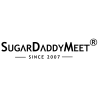Wearable technologies have been dominating tech industry conversations. Beyond this technology's status as a straightforward consumer electronic product, wearable tech is all about analyzing data about our own habits and lifestyles. At the heart of the trend is physical health. Wearable technologies allow us to learn how long we sleep and how well, how many steps we've taken, and the calories we've burned and consumed.
The present and future of wearables in our society is being played out on social media, with key conversations, consumer opinion, and industry predictions taking place online.
Some of the world's most recognizable tech and fitness brands - Google, Nike, Apple - are leading the trend as they continue to bring products to market that we can wear on our wrists, in front of our eyes, and even on our fingers to connect us to information we want. Tech reporters are constantly reviewing these new products, speculating on the next "big thing" (wearable smart hoodie anyone?).
But we wanted to find out, what do consumers really think about wearables?
At Brandwatch we partnered with Brilliant Noise, analyzing over 8 million online conversations around wearable technology and its key products and players from January 2013 - July 2014. The findings, while not completely surprising, did raise a lot of interesting questions and pinpointed some interesting points about this burgeoning part of the tech industry.
Here are some of the most interesting insights we extracted from the data:
Year on year the conversation around wearables has exploded - increasing a staggering 190% when you compare the first quarter of 2013 (973,300 mentions) to 2014 (2,816,814 mentions)
Only 8% of the conversation contained sentiment suggesting that people are potentially still reserving their opinion on the technology - with 6% positive and 2% negative
Interestingly, the most negativity didn't come from consumers who were skeptical about the technology, but from people who actually owned it (51% of negative chat was from owners) - hinting that the reality of owning and using wearable tech devices might not be living up to the hype the tech industry has built up
Twitter dominated as the main platform for the wearable tech conversation (75%), with discussions happening secondarily on news sites (10%) - directly because of media coverage and reviews
Wearables still seem to be struggling to find a real stronghold outside of the US - the US market accounts for over half (70%) of the conversation about the technology, followed by the UK (7%, Canada (3%), Australia (2%) and India (2%)
In this newer brand battleground, Google Glass, Fitbit and Pebble emerged as the top three products mentioned by volume in the US, while in the UK the rankings stood as Fitbit, Nike Fuelband and Google Glass
The majority of Google Glass conversation (53%) is taking place amongst males (74%) and in the US (53%)
Perhaps unsurprisingly given the technology's association with sports and technology, male authors led the conversation (65% vs. 35%) - however female authors are 42% more positive than men when discussing ownership of wearables
Brand leaders:
Most talked about products (by volume of mentions)
1. Fitbit
2. Google Glass
3. Nike Fuelband
4. Pebble
5. Samsung Gear
6. VivoFit
7. GoPro
8. iWatch
Top products:
Most desirable products (by internet to purchase online discussions)
1. Fitbit
2. GoPro
3. Google Glass
4. Pebble
5. Nike Fuelband
6. Jawbone
7. VivoFit
8. iWatch
We are at a crossroads when it comes to technology because the mainstream consumer is exposed to new products and trends, especially wearable tech. It's not just product reviewers and gadget-loving geeks sporting Jawbone Up bands and "liking" Ringly on Facebook, everyone from kids to grandparents have experience with it. We are all a part of the conversation. But I have to ask:
What other type of personal health information will wearable technologies uncover in the future?
How long will it be before every clothing purchase has an embedded technology element?
Will the wearable tech trend be just that - a phase or a trend?
I can't wait to see where we go from here. While I can't predict the future, I do know that I'll be listening closely to the online conversations for insight into the present sentiment and hints toward future innovation when it comes to wearables.







